I have another garden visit in the works so I thought I’d delay posting this week, but the sight of one of these lying in a gutter inspired me. It’s an Osage orange, a hedge apple, also known as bow wood or bois d’arc, a softball-sized fruit that looks like a mash of chartreuse brains.
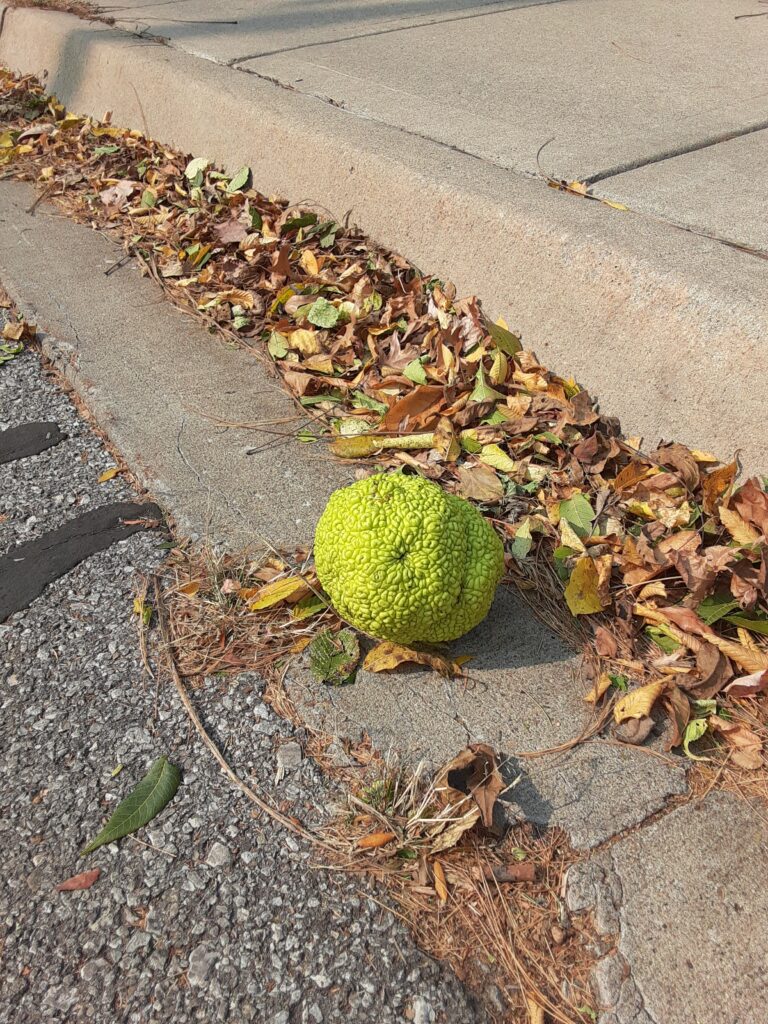
Everyone has an opinion about Osage oranges (Maclura pomifera). Like squirrels, people either love or hate them. The plants have thorns. Out in the country, they grow along fences, mixing with scrubby, brambly things, although as trees they grow around forty feet high. There’s a lot of folklore associated with them. The wood is supple and repels rot, so Native Americans used it to make bows. It’s also extremely long-burning, an asset on the treeless plains.
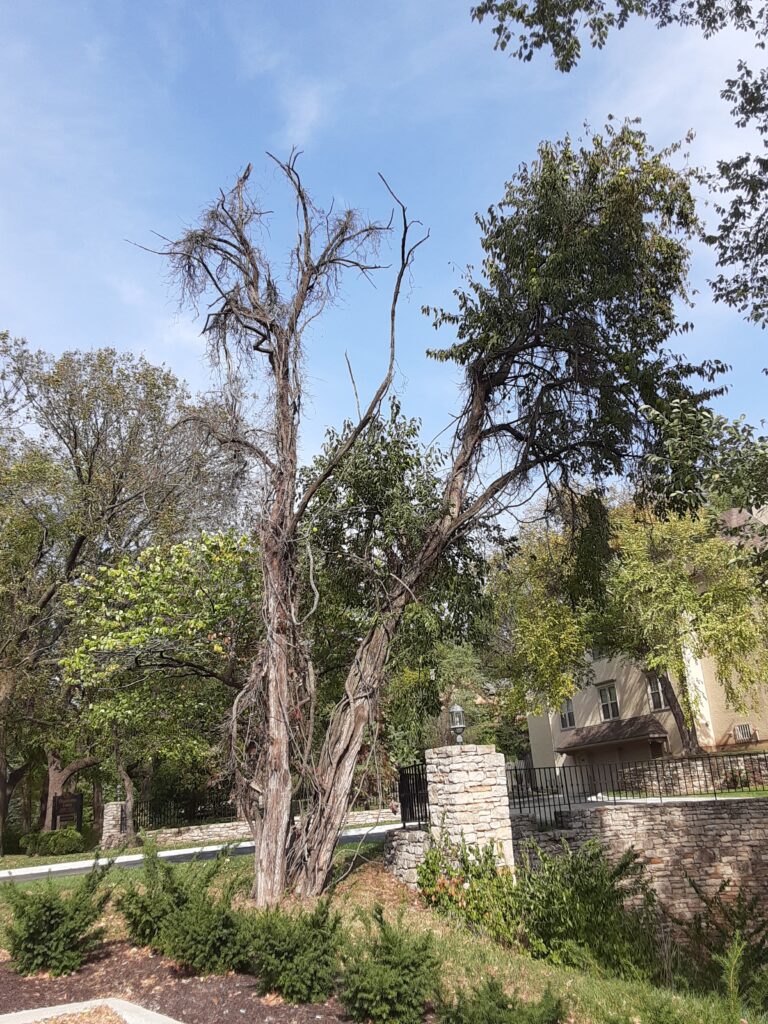
Vines are strangling this Osage orange tree, but you can still see the sinuous quality of the wood 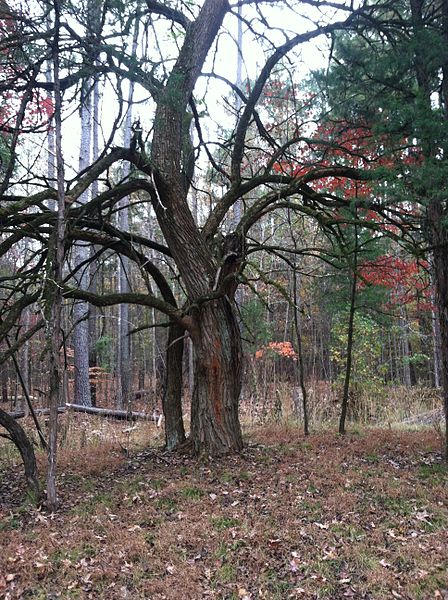
People claim the fruit repels insects like spiders, although according to the Burke Museum in Seattle, this is a myth. Spiders can’t smell airborne odors and have been known to live and spin webs on Osage orange trees, which my friend Susi describes as “very, very messy if you have one growing in your yard.” The apples are striking and unusual, the kind of thing people might display in a bowl or basket until they shrivel and attract fruit flies.

Osage orange is not citrus at all but a member of the fig family. They’re inedible, but they’re not toxic, either. They’re simply too big for most animals to eat, and supposedly some cattle have died trying when the fruit lodged in their throats and suffocated them. Similar to opossums and armadillos, Osage oranges are remnants of an earlier age. According to an excellent and informative piece from Resilience, by blogger Adrian Ayres Fisher, Osage oranges are an ecological anachronism: “a plant or animal having characteristics that don’t make sense for the place where it is found.” Although Osage oranges sprout easily, their spiky thorns and enormous fruit would prevent the birds and bison that inhabited the plains from eating the seeds. So how did they spread? Their original territory was limited to the Red River Valley in Arkansas, Texas, and Oklahoma, but now they thrive throughout the US zones in 5-9.
Fisher hypothesizes that mastodons and mammoths browsed on the fruit, dispersing it throughout North America as far north as Ontario. When those creatures died out, the Osage orange’s range shrank. Then Native Americans recognized its usefulness and began trading its seeds, helping it spread once again.
This raises questions about what makes a native plant native. Typically we think of a native as a plant that lived here before European settlement. As the case of the Osage orange reminds us, that time consisted of many eras. Trying to return a landscape to a pre-settlement condition requires making a value judgment about which time to return to. Valuing one moment in 1803 as the way things should be above all others is arbitrary, and has more to do with our perspective and values than the qualities of that moment itself. The Osage Nation, after whom the plant is named, originated in present-day Ohio and Mississippi river valleys before moving west in the 1600’s. The U.S. government forced them to move to Oklahoma in the 1870’s.
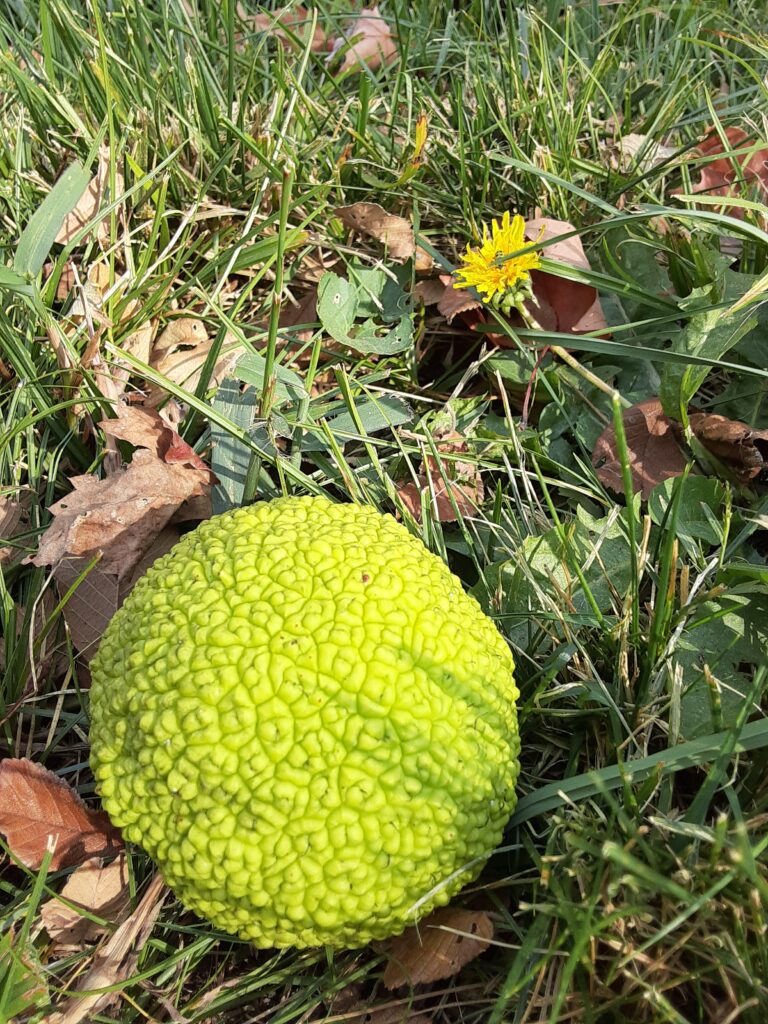
Whether we consider them native or not, Osage oranges offer many qualities we now consider desirable. They provide shelter to birds and wildlife. They thrive alongside compatible natives, encouraging diversity. They resist “herbicide drift,” and thrive in tough conditions. In the fall, the leaves turn a wonderful yellow, and in winter, the sculptural trunks look cool. But if you plant one, watch out for falling fruit. A reviewer on one message board gives Osage orange a single star:
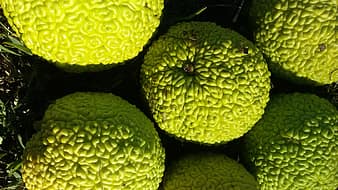
I’m always afraid of taking one to the head in Central Park! But I didn’t know what they were until now! Maybe Museum of Natural history should put them in a diarama with Brontosaurus!
Hi Jane, I love this thought. Do they have a wolly mammoth diorama? I bet they do. I’m impressed that you’ve seen them in Central Park. I wonder how they got there.